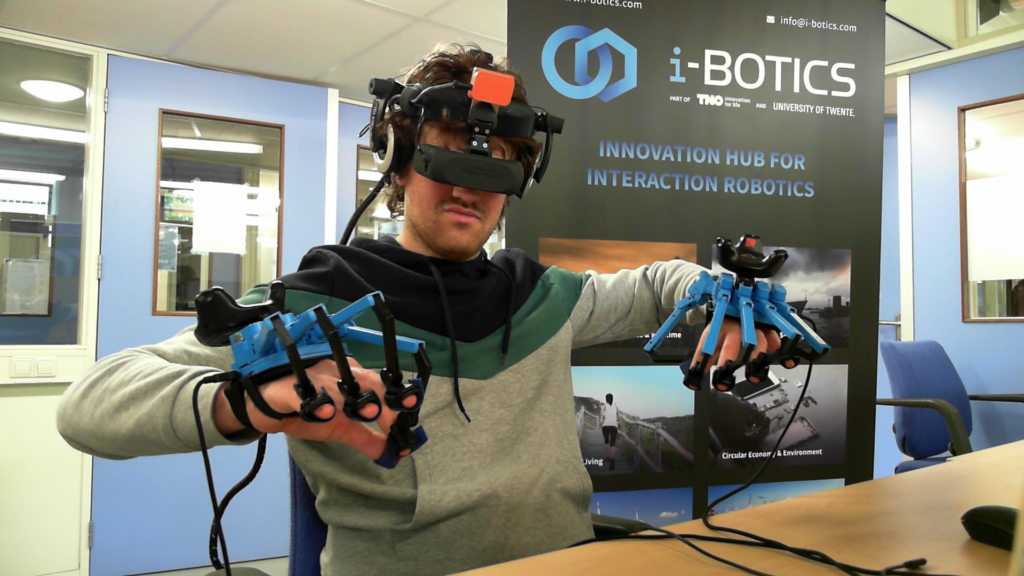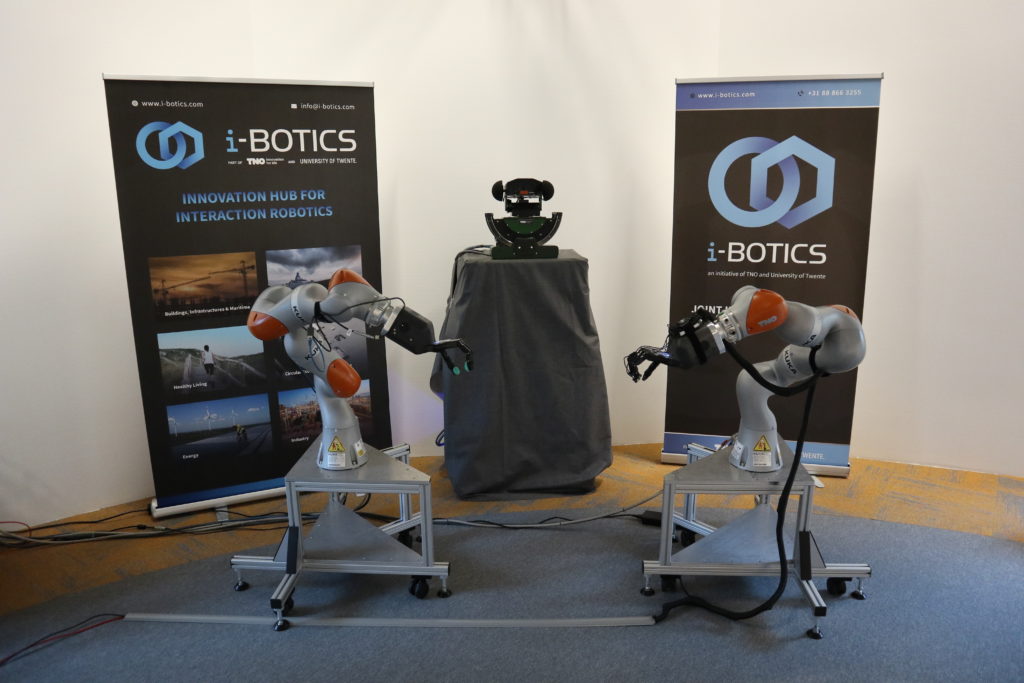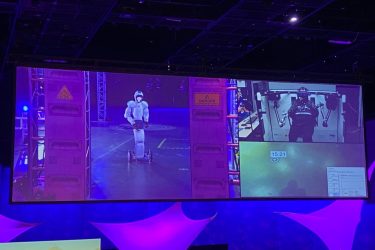HaBiTS: Haptic Bimanual Telexistence System
At present, military operations still require humans to operate in hazardous environments, for instance when dealing with explosive ordnance disposal (EOD). Telerobotics technology allows operators of unmanned robotic systems to interact remotely out of harm’s way. This reduces the need for experts to directly operate under life-threatening conditions, and thus mitigate the human risk. Telerobotic systems currently in use by military personnel have limited capability to address tasks that require a high level of dexterity in a remote environment in an intuitive way. Operators are usually restricted by a simple and small 2D display connected to cameras mounted on the robot with no auditory feedback. This limits the operator when performing tasks that require proficient situation awareness or tasks that require fine manipulation and depth imagery. Additionally, the telerobotic systems typically use low-dexterity end effectors (one degree of freedom (DOF)) and have a single manipulator arm. They typically provide operator control through a series of joysticks, switches, and buttons, while lacking the direct user haptic feedback that enables operators to experience the sense of being present in the remote environment where the actual operation is performed and that improves their ability to perform complex tasks remotely. Also, many practical tasks such as unscrewing lids or bolts and opening bags or containers require the use of (both) hands, or, in case of teleoperation, (bi)manual manipulators. Hence there is a technology gap within bimanual telemanipulation. There is a need for systems that provide intuitive fine finger dexterity through haptic feedback and a telepresence setup that provides 360 degrees stereo vision.
TNO has developed and evaluated telepresence systems for military applications such as EOD in the past to address this technology gap. However, intuitive haptic control is still lacking.
To tackle this, TNO and SenseGlove have developed accurate haptic enriched bi-manual telerobotics control in a telepresence context in the Haptic Bimanual Telexistence System (HaBiTS) project.
The project team has demonstrated opening a bag remotely, and realised:
● improvements in the kinematic mapping between the hand exoskeleton and robotic hand,
● integration of advanced force-sensors in the haptic feedback loop,
● a wireless connection between the operator and the robot.






